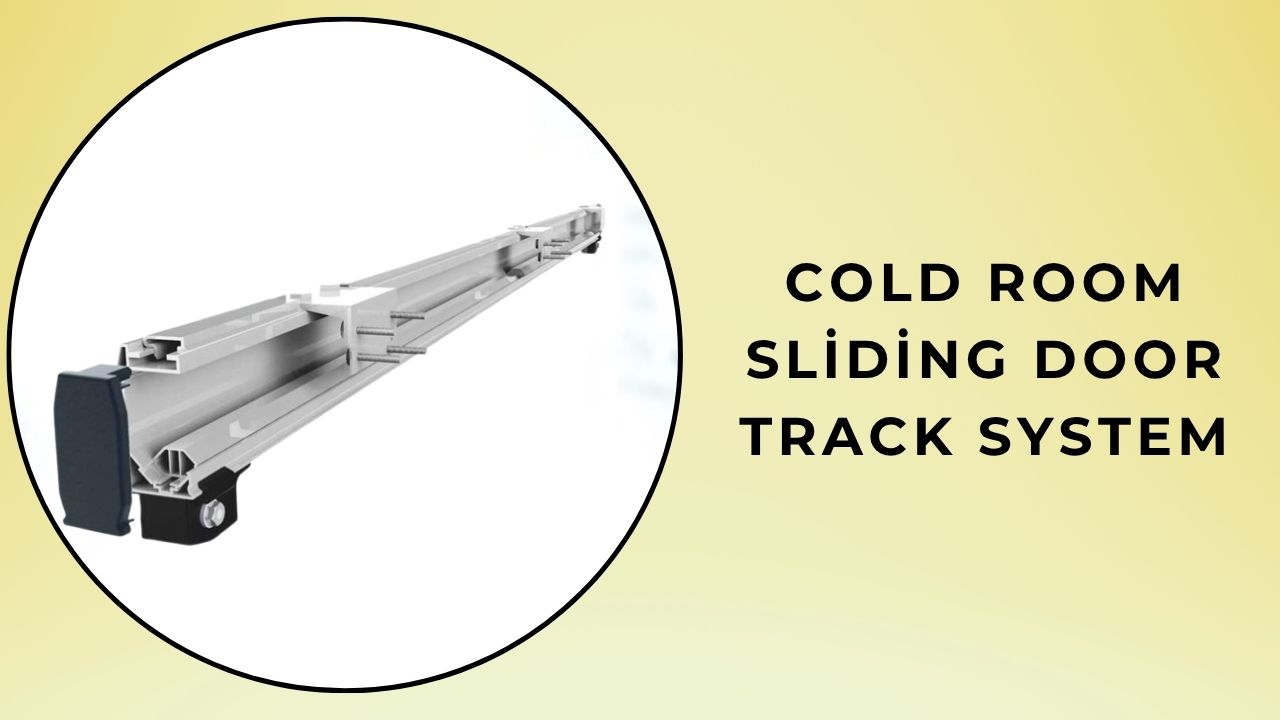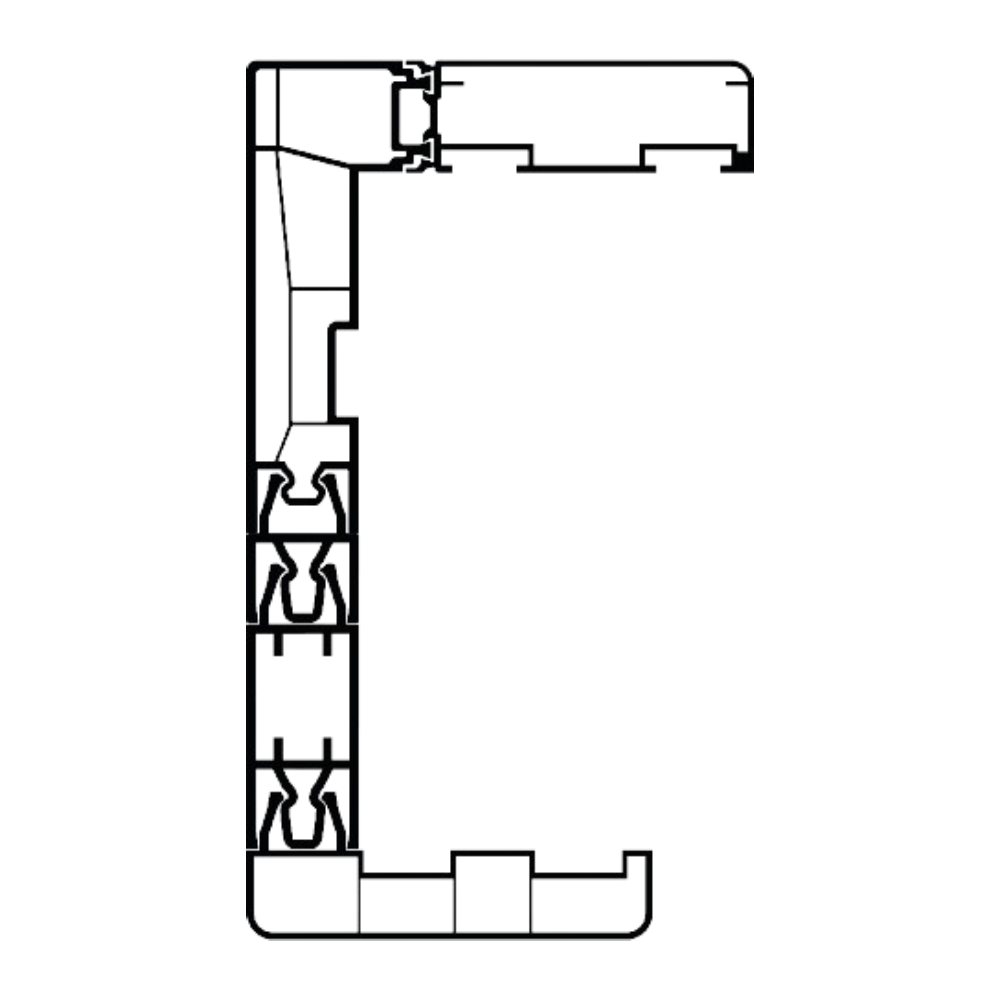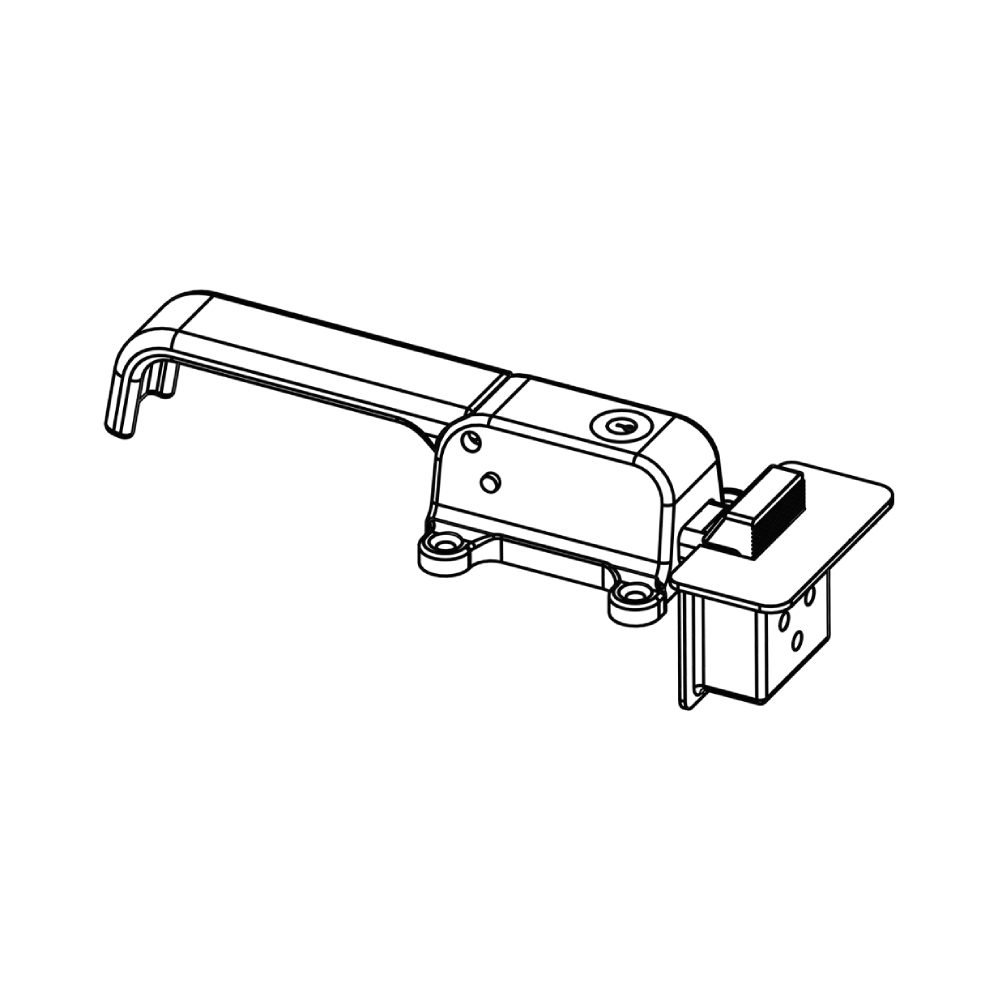Cold Room Sliding Door Rail System
Definition and Role of Sliding Door Rail Systems
Cold room sliding door rail systems are mechanical components that enable the movement of sliding doors used in cold storage facilities, industrial refrigeration systems, and environments requiring precise temperature control. These systems allow door panels to slide horizontally, ensuring a fast and secure passage while supporting energy efficiency and hygiene standards. Rail systems are the cornerstone of sliding doors located at the entry-exit points or internal partitions of cold rooms and play a critical role, particularly in the food, pharmaceutical, logistics, and retail sectors.
Rail systems are designed to bear the weight of the door and are typically manufactured from corrosion-resistant materials such as stainless steel or aluminum. The system consists of rails, rollers, guides, and fastening elements. Since cold rooms must operate in low-temperature environments, rail systems are developed to maintain performance even in conditions down to -40°C. They can be customized for different door sizes and weights; for example, lightweight rail systems are used for small cold rooms, while heavy-duty rails are preferred in large logistics warehouses. Rail systems support the door’s airtightness and insulation, reducing energy loss and operating costs.
Technical Structure and Performance Features
Cold room sliding door rail systems are designed to high engineering standards and manufactured to adapt to the demanding conditions of cold rooms. Rails are typically made from stainless steel (grade 304 or 316) or anodized aluminum; these materials exhibit high resistance to corrosion in humid and cold environments. The surface of the rails is specially treated to ensure smooth sliding and enable rollers to move with low friction.
Rollers are the core components that bear the door’s weight and move along the rail. They are typically made from high-strength plastic or steel and are resistant to hardening at low temperatures. Rollers ensure the door slides smoothly and quietly, which is particularly important in warehouses with heavy traffic. Some rail systems integrate motorized mechanisms or sensor-based systems for automatic sliding, enhancing operational efficiency.
Rail systems are equipped with special guides and sealing elements to support the door’s airtightness. For example, lower guide rails ensure the door fits perfectly to the floor, preventing air leaks. The system can have different load capacities depending on the door’s weight and frequency of use; for instance, heavy-duty rails capable of supporting up to 500 kg are used in large logistics warehouses. Additionally, rail systems can be equipped with manual opening mechanisms or safety locks for emergencies, enhancing personnel safety.
Industrial Applications and Use Cases
Cold room sliding door rail systems are widely used in industries where energy efficiency and rapid access are critical. In the food industry, they ensure fast and secure door opening in cold rooms storing meat, fish, dairy products, and frozen foods. For example, in a meat processing facility, rail systems guarantee smooth door movement at wide entrances with frequent forklift traffic, protecting product safety.
In the pharmaceutical industry, rail systems provide a hygienic environment in cold rooms storing vaccines, blood products, and other sensitive medical supplies. Stainless steel rails, with their easy-to-clean structure, comply with sanitation standards and prevent microorganism buildup. In cold chain logistics, mobile cold rooms used for transport and temporary storage rely on rail systems for fast and reliable door movement.
In commercial kitchens, restaurants, hotels, and supermarkets, rail systems save space and provide suitable passage for high-traffic areas. For example, in a supermarket’s back storage, rail systems are designed to withstand frequent door opening and closing. In laboratories and clean rooms with high hygiene requirements, the smooth and corrosion-resistant structure of stainless steel rails offers significant advantages.
Benefits of Rail Systems
Cold room sliding door rail systems offer multifaceted benefits to businesses:
-
Energy Savings: Rail systems ensure airtight door closure, reducing energy loss by 30-40%. This allows refrigeration systems to operate less, lowering electricity costs.
-
Fast and Secure Movement: Smooth rails and rollers enable the door to slide quickly and quietly, facilitating personnel and vehicle transitions.
-
Durability and Longevity: Stainless steel or aluminum rails are resistant to corrosion in humid and cold environments, enabling maintenance-free use for years.
-
Hygiene Support: Smooth surfaces facilitate easy cleaning and comply with sanitation standards in the food and pharmaceutical industries.
-
Customization Flexibility: Rail systems can be tailored to different door sizes, weights, and usage frequencies, adapting to any cold room design.
Production Process and Material Selection
The production of cold room sliding door rail systems requires precise engineering and quality control processes. Production begins by considering the cold room’s dimensions, door weight, and intended use. Rails are typically cut and processed with CNC machines, ensuring their smoothness and the seamless movement of rollers. Stainless steel or aluminum materials are treated with special coatings to resist corrosion; for example, anodized aluminum rails ensure long-term use in humid environments.
Rollers are made from high-strength polymer or steel and designed to maintain flexibility at low temperatures. During production, the rails’ load capacity, friction coefficient, and corrosion resistance are tested. For instance, heavy-duty rails can support up to 1000 kg and are reinforced for intensive use. In the quality control phase, rail systems are evaluated for compliance with international standards (e.g., ISO or EN).
Material selection is customized based on the intended use. In the food industry, hygienic stainless steel rails are preferred, while more economical aluminum rails may be used in logistics warehouses. Some rail systems are equipped with coatings resistant to UV rays or chemical cleaners.
Types and Variants of Rail Systems
Cold room sliding door rail systems are produced in various models to meet different needs:
-
Standard Rail Systems: Lightweight rails compatible with 60-80 mm thick doors for small and medium-sized cold rooms.
-
Heavy-Duty Rails: Designed for doors weighing 500-1000 kg in large logistics warehouses.
-
Automatic Rail Systems: Equipped with sensor-based or motorized mechanisms, used in high-traffic areas.
-
Custom-Sized Rails: Produced specifically for large or small entrances.
-
Hygienic Rail Systems: Made from stainless steel and targeted at the food or pharmaceutical industries.
This variety offers tailored solutions for different industries, expanding the scope of rail systems.
Installation and Maintenance Guide
Proper installation of cold room sliding door rail systems is critical for maintaining long-term performance. Installation must be precisely aligned with door dimensions and entrance sizes. Rails are fixed to the floor and walls, and laser measuring devices can be used for accurate alignment. Installation by expert teams ensures optimal sealing and ease of movement.
For maintenance, rails should be regularly cleaned of dust and dirt buildup. Rollers should be periodically lubricated to reduce friction and checked for wear. Stainless steel rails are easily cleaned with hygienic cleaners; in the food industry, chemically resistant surfaces are preferred. The corrosion status of rails should be regularly inspected and replaced if necessary. These processes ensure that rail systems remain both functional and hygienic.
Production and Industry Dynamics in Turkey
Turkey has a robust infrastructure for the production of cold room sliding door rail systems. Local companies produce high-quality and cost-effective rail systems, competing in both domestic and international markets. For example, some Turkish manufacturers produce stainless steel rails for the food and pharmaceutical industries, while offering heavy-duty aluminum rails for logistics. Companies provide detailed technical support and customization options to meet customer needs. Turkey holds a significant position in this sector, exporting to Europe, the Middle East, and Asia.
Technological Innovations and Future Vision
Cold room sliding door rail systems are continuously evolving with technological advancements. Smart rail systems, equipped with sensors, can optimize door movements and enhance energy efficiency. Eco-friendly materials, such as recyclable aluminum or composite rails, contribute to sustainability goals. Automatic rail systems facilitate rapid transitions in large warehouses, improving operational efficiency. In the future, lighter yet high-strength materials and advanced sensor technologies could further enhance the performance of rail systems, offering significant advantages for businesses aiming to reduce costs.








